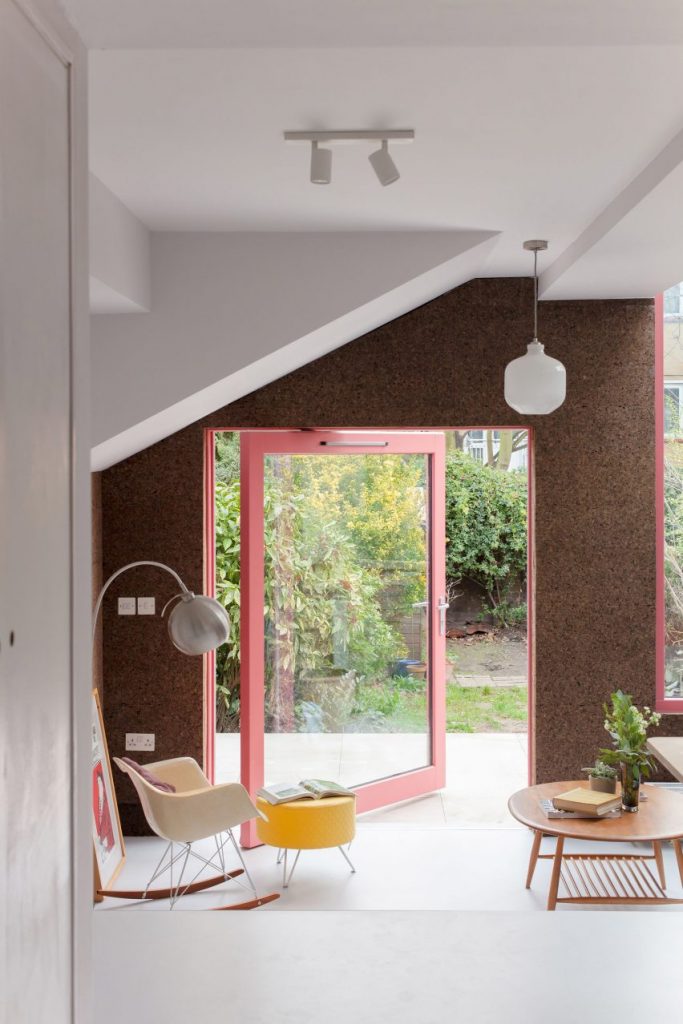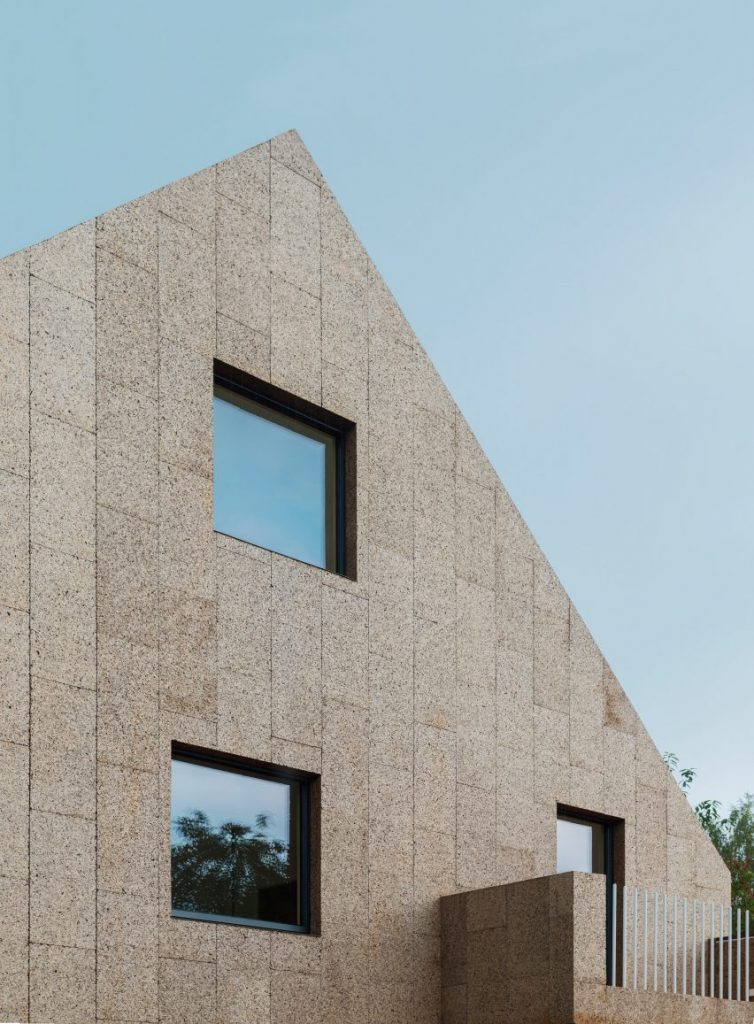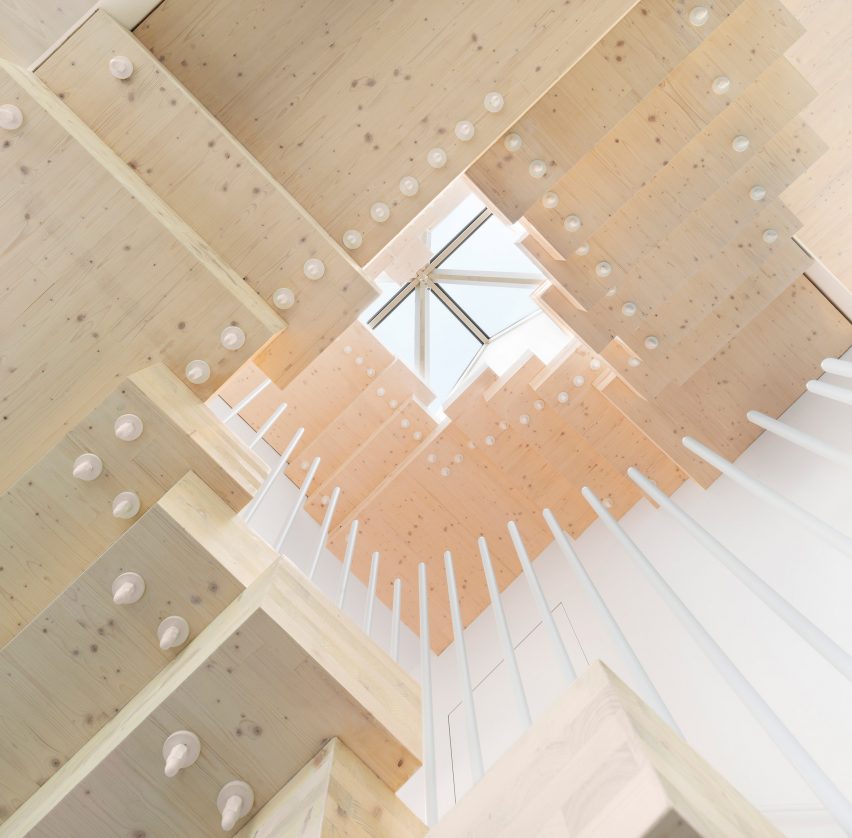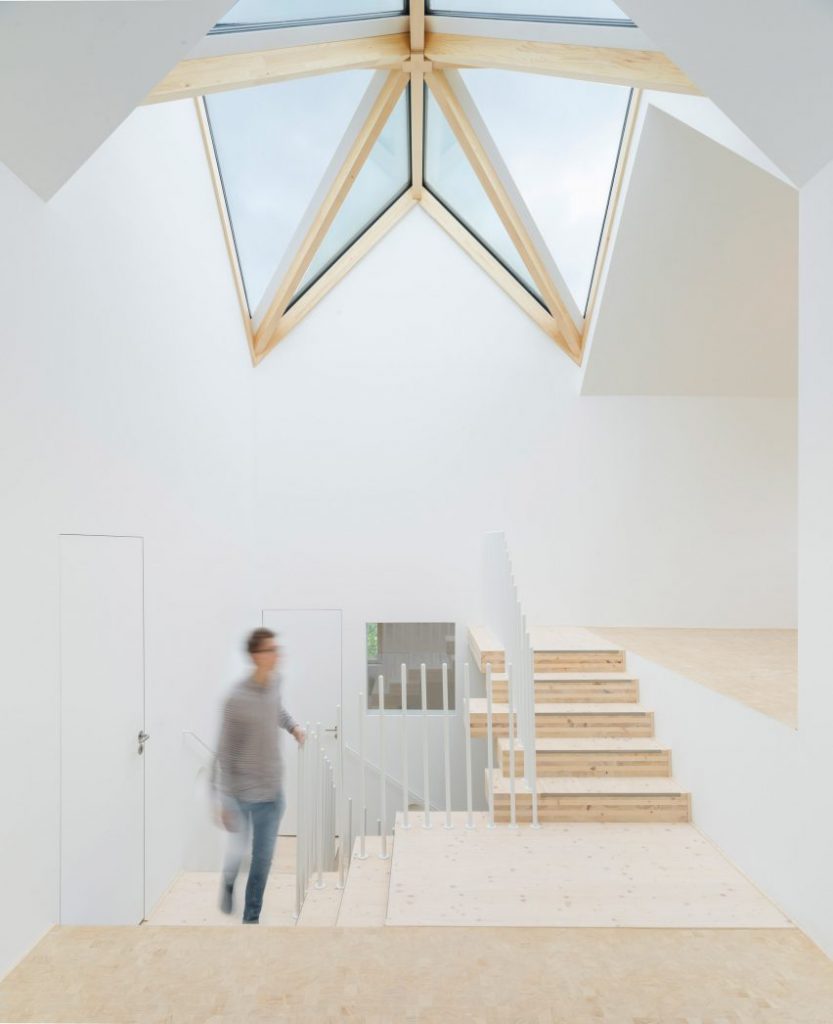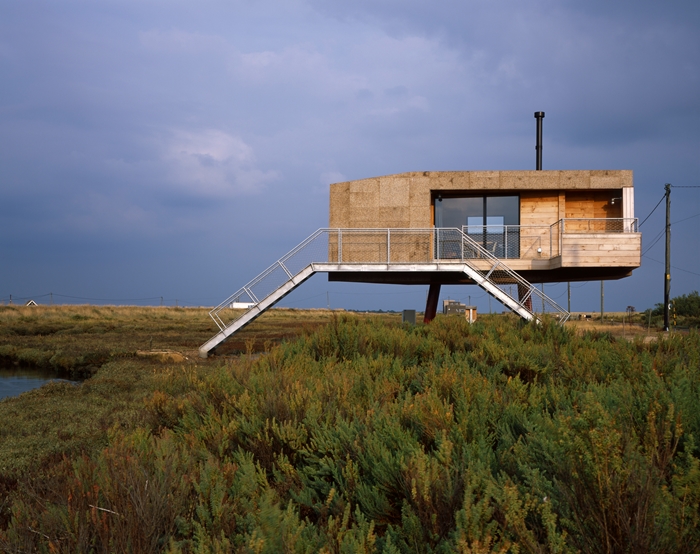The bark of the cork oak is harvested by hand without harming the tree or disturbing the forest, which makes cork both recyclable and renewable material. Durable and insulating, extremely waterproof and resistant to abrasion, lightweight and fire retardant, cork has been used by architects in recent years as a cladding or even construction material, endowing the buildings with warm earthly hues and natural patterning.
Cork House designed by London-based Nimtim Architects is a rear extension to a small Victorian terrace house in South London. Clad in cork with contrasting pink windows, the building evolved through a collaborative process with the family who own the house – a graphic designer and photography agent and their children.
The extension has a simple pitched roof that rationalises a more complex array of ceiling heights and a large pivot door framing an uninterrupted view of the garden beyond. Internally and externally, the structure is clad with naturally stained cork, which not only complements the existing brickwork on the main house but also allows to discard any additional expanded foam insulation. The material is breathable, free from synthetic resins, chemicals or carcinogenic materials and fully compostable.
Window frames are painted neon pink which provides a flash of colour against the cork. Together with bold colours and patterns of the house, including the new master bedroom and en-suite on loft level and the renovated 1st floor, they reflect the playfulness of both design team and clients.
The project was shortlisted for the AJ Small Projects Award 2019.
Rundzwei Architekten designed Cork Screw House, a single-family home in Berlin, which has a façade and a roof clad with waste cork from a wine-bottling company. Internally, the building encompasses several bright split-level floors made from timber, which can be accessed through a spiralling staircase atrium at its centre. A gable skylight above the staircase lets the natural daylight into the building. Every room has a direct connection to the outside, façade having a space for a potential second entrance, which gives its occupants the option to convert the house into studio apartments in the future.
The split levels sit atop a concrete base, which is embedded partially below ground level, where living and dining spaces are framed by rammed earth walls. This layout was designed by the architects to maximise useable floor area of Cork Screw House, which was limited by strict building regulations.
Constructed in timber, the complete structure is clad with rectangular-shaped panels of cork creating beautifully uniform façade and providing with a high acoustic performance and outstanding insulation values. With an innovative thermally efficient heat system and integrated solar panels on the roof, this material contributes significantly to the energy efficiency and sustainability of the building, making it almost autonomous.
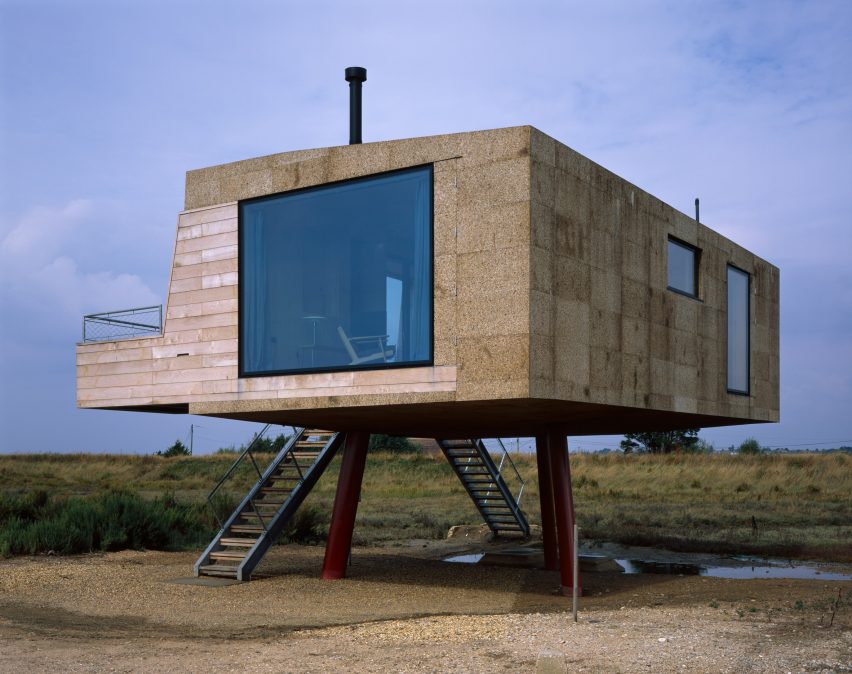
Seaside studio by Lisa Shell. Ph: Helene Binet (via architecture.com)
British architect Lisa Shell developed a seaside studio on the Essex coast for artist Marcus Taylor, who wanted a peaceful place that he could retreat to and concentrate on his work. The small beautifully detailed house has an extraordinary tripod structure, which hovers over the reclaimed marshland allowing nature to reclaim the ground below back to marsh. The service connections of power, water and sewage are concealed cleverly in the house’s galvanised-steel legs finished in a resinous paint that will withstand the salty air. The studio can be accessed by a galvanised steel staircase.
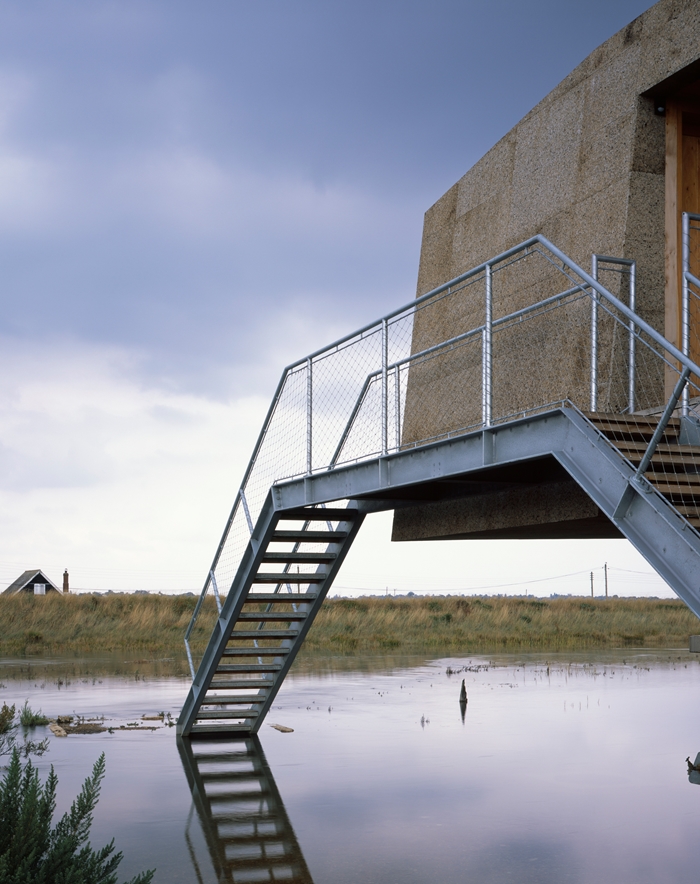
Seaside studio by Lisa Shell. Ph: Helene Binet (via architecture.com)
Built from cross-laminated timber, the studio has walls, roof and underside clad with cork panels, which reinforce the idea of a floating object. Its mottled texture references the plumage of the redshank, a wading bird that can be found in the salt marsh, as well as the tones of the surrounding landscape. An external balcony with built-in seating is in oak visually invading the cork cladding.
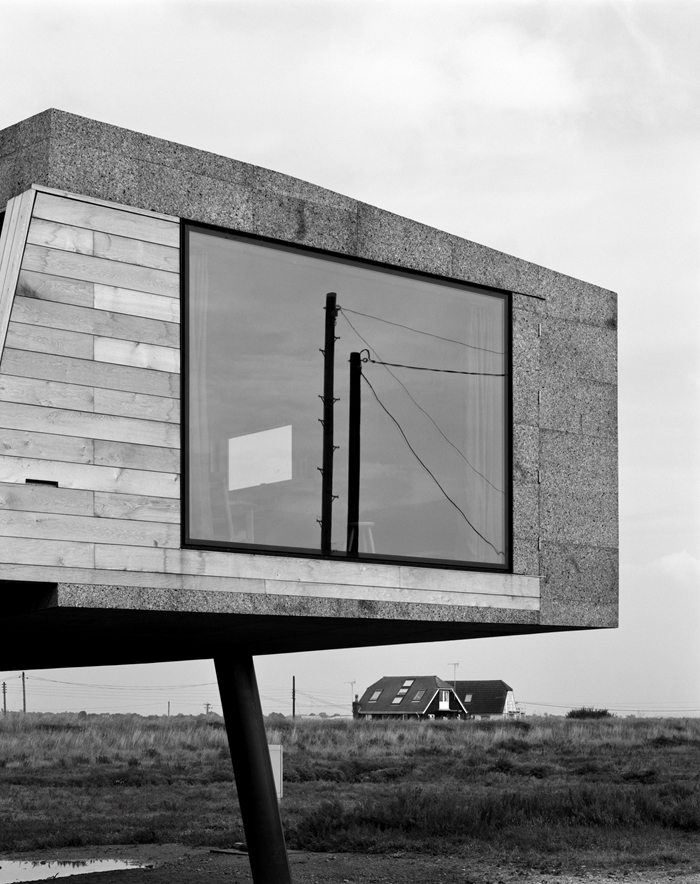
Seaside studio by Lisa Shell. Ph: Helene Binet (via architecture.com)
Each window is proportioned according to the importance of the view: large windows look out towards a shingle bank and the sea beyond as well as poetic Maunsell forts and wind turbines, while other openings are carefully positioned to avoid overlooking neighbouring properties, which gives the building a sense of isolation.
The project was longlisted for the 2017 RIBA House of the Year Award.
British architect and researcher Matthew Barnett Howland collaborated with Dido Milne and Oliver Wilton to design an outstanding Cork House in Berkshire, England, a brand new and radically simple form of plant-based construction. Developed as an inventive response to the complexities and conventions of modern house construction, the house is built from sustainability-sourced load-bearing cork blocks supported by timber components.
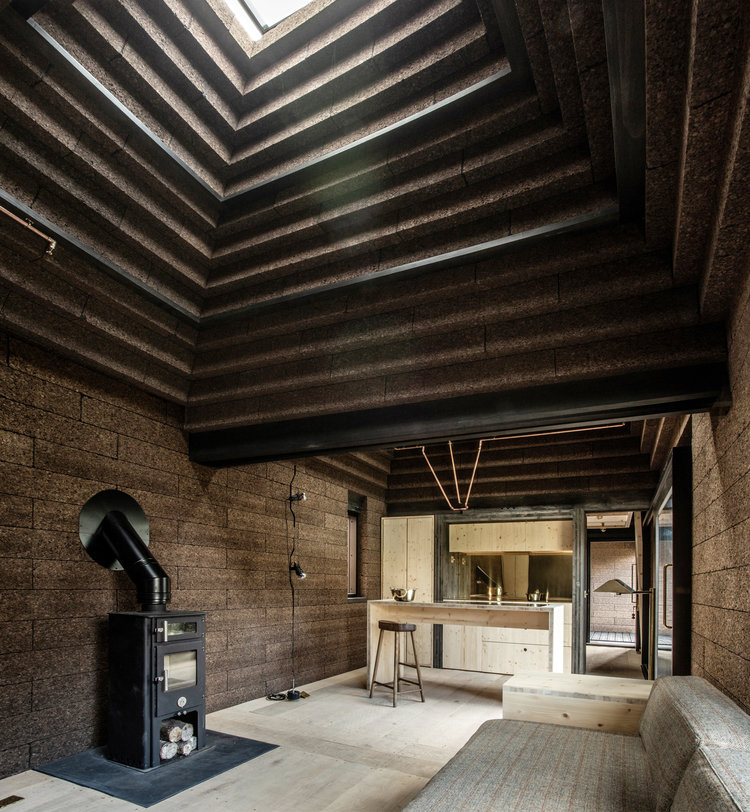
Cork House by Matthew Barnett Howland, Dido Milne, Oliver Wilton
All components are prefabricated off-site and assembled by hand on-site without mortar or glue. The building’s s five pyramid-like volumes can be easily dismantled, reused or recycled in the future. This highly innovative self-build construction kit is carbon-negative at completion and has exceptionally low whole life carbon.

Cork House by Matthew Barnett Howland, Dido Milne, Oliver Wilton
The structural from of the Cork House is new yet familiar – the team reimagined the simple construction principles of ancient stone structures such as Celtic beehive houses. Internally, the exposed solid cork creates a warm sensory environment – walls are gentle to the touch and even smell good, while the acoustic is soft and calm.
The project was shortlisted for the Stirling Prize 2019.

